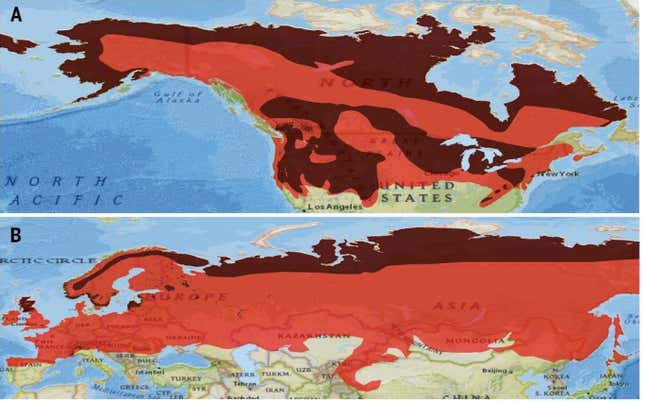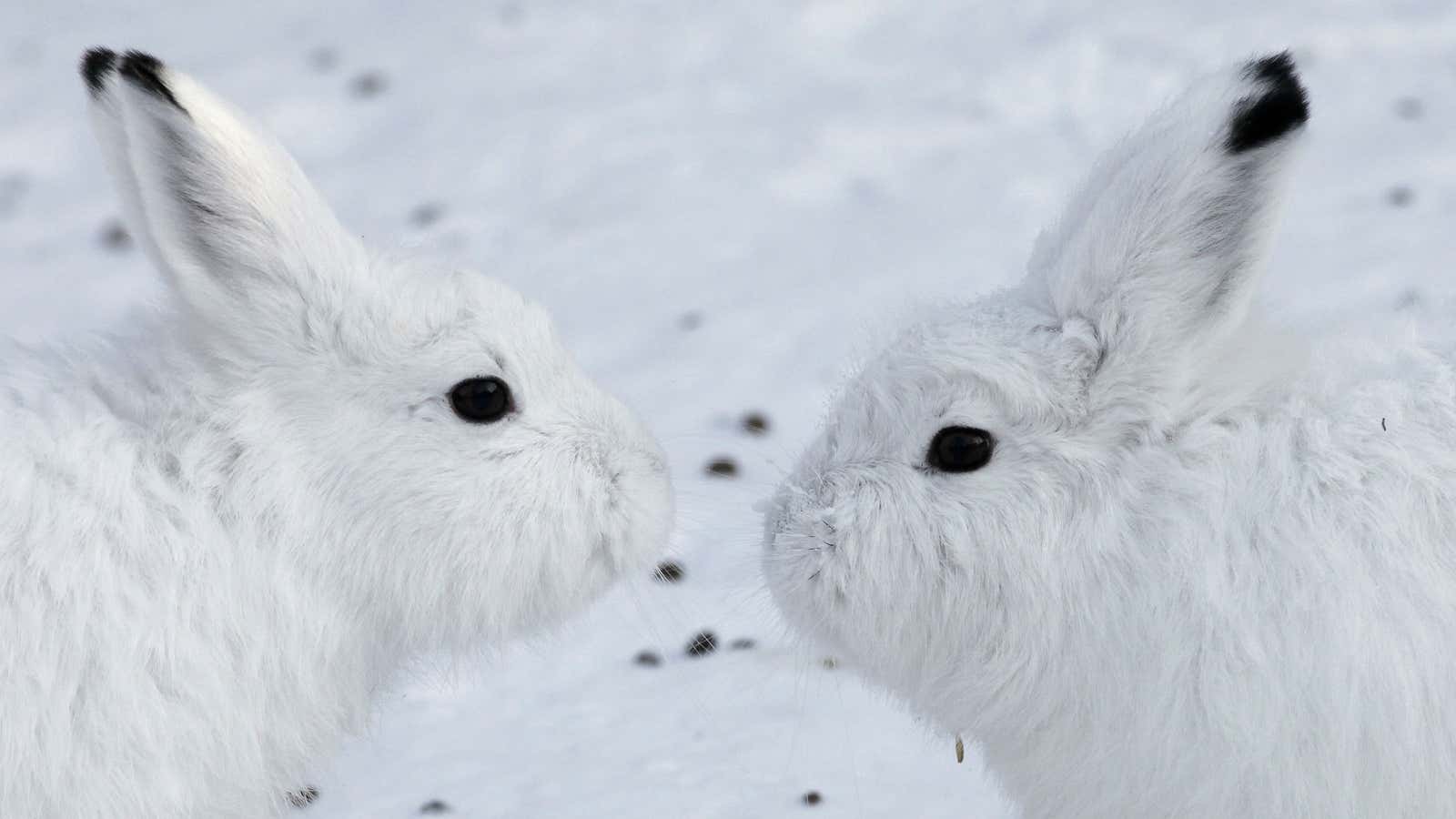For obvious reasons, it pays for prey to blend in with the environment around them. For individual animals, it means hunters won’t spot them as easily. Entire species benefit, though, when the survivors make it to mating season to pass on their successful genes.
Anthropogenic climate change is messing with the system. As the planet warms, cold regions that used to be white and snowy in the winter are staying brown. Mammals in these regions that molt from brown to white for the winter are at a new disadvantage, which could spell bad news for the species—unless they can pick the right mates.
Last week, a global team of researchers published (paywall) a paper in Science finding that the key for these at-risk species’ survival is passing along the right genes. Molting white for winter is a shared trait among most members of a specific species, but varies in timing and intensity between different populations. Some members never get a white coat at all. Which species do molt for white often depends on where the population lives. Snowshoe hares living in the southern limits of their species, for example, may stay dark over the winter months if their ancestors had been living in a warmer region with less snow, while their cousins up north get a shiny white coat.
So, if a white-furred snowshoe hare mates with another snowshoe hare that maintains its darker coat throughout the winter, their offspring won’t stick out like a sore thumb. However, that only works in regions where where winter-white iterations of the species frequently mingle with their brown-coated friends.
The study included almost 3,000 samples of eight species that are known to undergo winter-coat changes each year, including hares, weasels, and the arctic fox. The scientists created maps that show areas, called “polymorphic zones,” where there was more or less equal distribution of winter-white and non-molting iterations of a given species:

These regions may be where some of the fastest climate-change evolution could happen. As more of the brown-coated species survive, they’ll have first dibs on passing along their genetic information for generations to come. The regions shown above are most-often homes to the arctic fox, type of weasels, and a type jackrabbit. Other regions across the globe like the southern coast of Japan and the southwest of the US, are polymorphic zones for other types of molting mammals.
If the species as a whole can’t pass along its winter-brown genes, it’ll likely join the ranks of the hundreds of other animal species that are endangered or extinct as a result of human activity.
